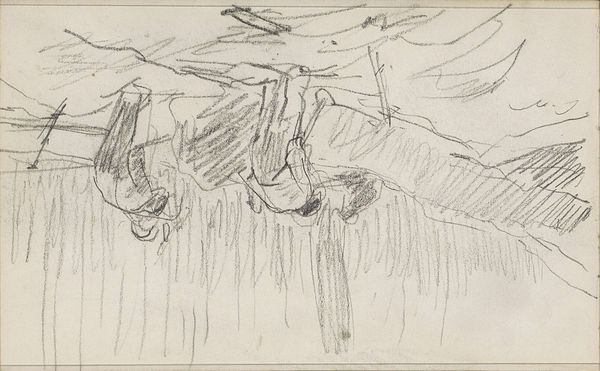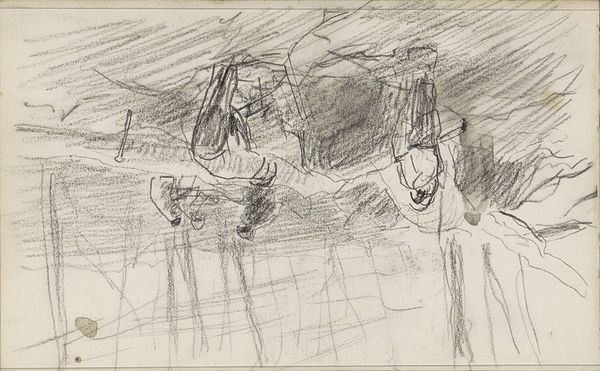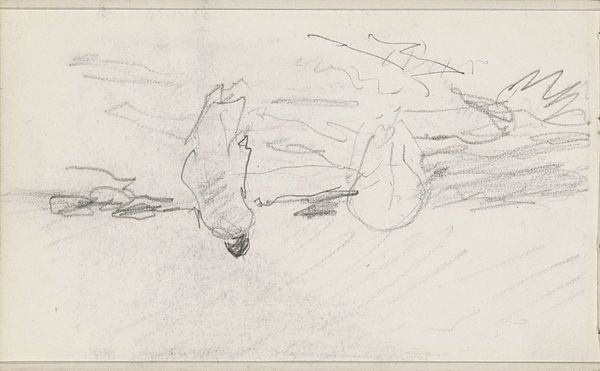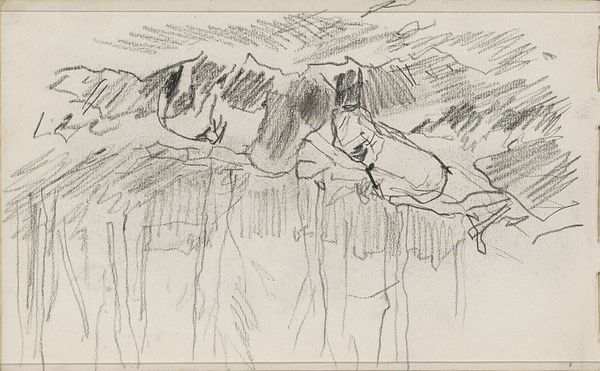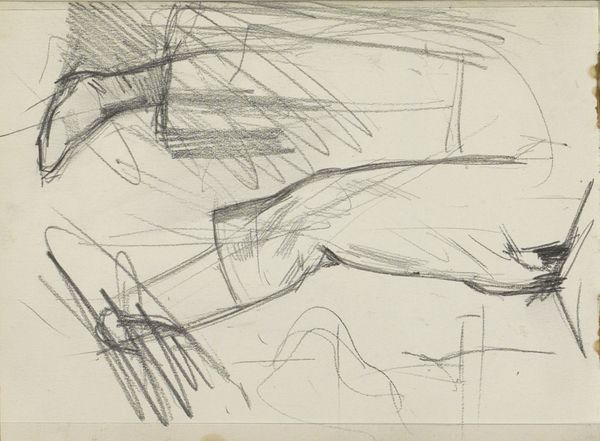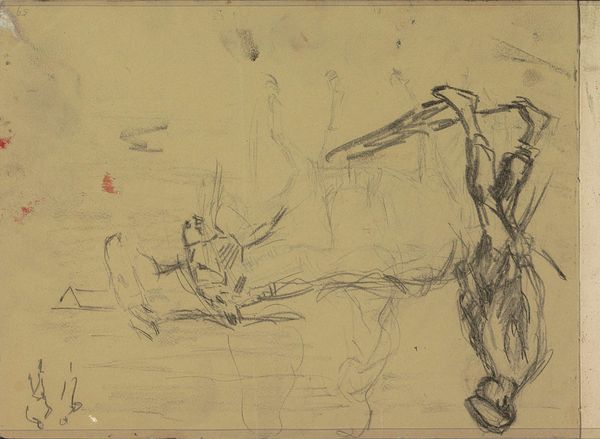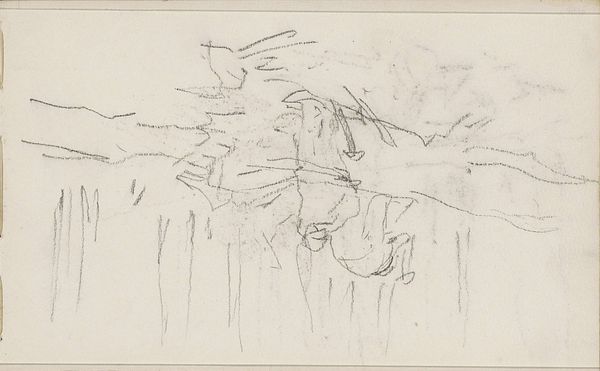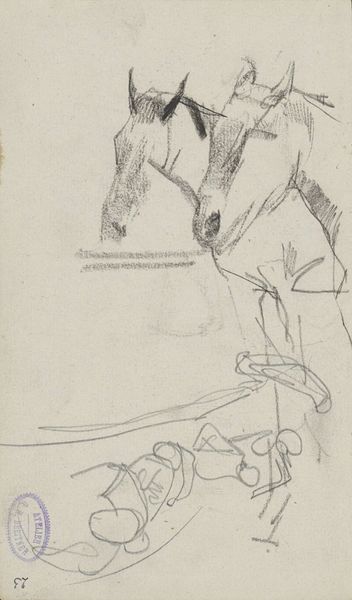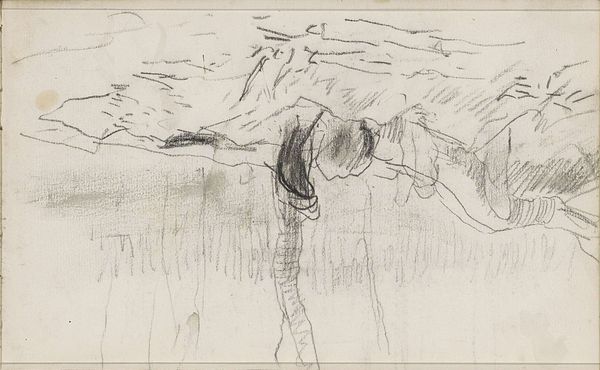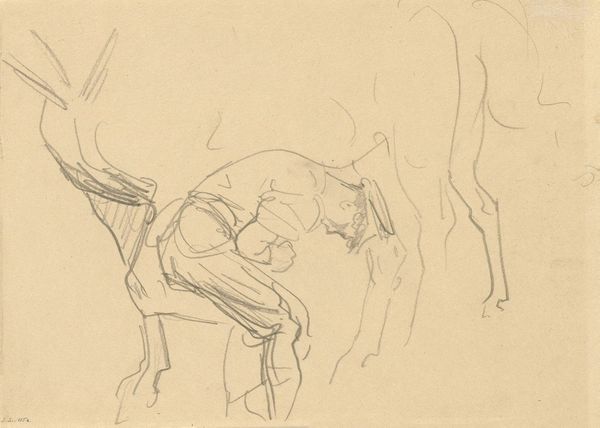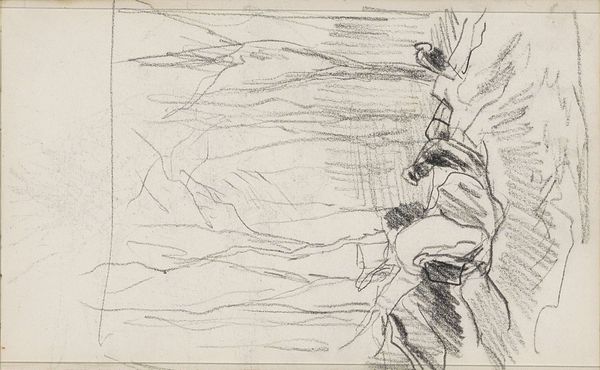
drawing, graphite
#
drawing
#
impressionism
#
pen sketch
#
landscape
#
graphite
#
realism
Copyright: Rijks Museum: Open Domain
Curator: Before us is "Woodcutters in a Forest," a drawing by Anton Mauve, dating sometime between 1848 and 1888, here at the Rijksmuseum. Editor: The initial feeling is…raw. It’s a flurry of graphite, almost vibrating with a kind of pent-up energy, as if the artist captured a fleeting moment of laborious activity. Curator: Indeed, the apparent sketch-like quality is misleading. We must understand that Mauve, alongside other Realist painters, was acutely aware of representing the dignity of labour, often omitted or romanticized in earlier artistic movements. This work embodies that commitment, revealing a gritty portrayal of these woodcutters and their challenging environment. Editor: I see that, but there’s also an intentional lack of refinement. The lines aren't precise. Instead, they build up a textured surface that’s intriguing in its very roughness. It has something almost... impressionistic. There’s a play of light created through the density and direction of these strokes, giving a sense of the forest's depth. Curator: This intersects with burgeoning naturalist philosophies during this era which valued unvarnished depictions of the natural world. We cannot dismiss the impact of encroaching industrialization on rural life, either. Consider how these woodcutters, as representatives of the working class, were beginning to face pressure as new mechanized modes of production transformed labour practices and redefined communities. Editor: Even just thinking about the composition – it avoids any heroic idealization. The woodcutters are integrated into the thicket; their presence feels almost subsumed by the forest's immensity. It underscores a symbiotic or possibly even a strained relationship between humanity and nature. Curator: Absolutely, these elements subtly underscore the socioeconomic currents running through this artwork. Understanding those circumstances informs a much fuller view of Mauve’s intention than, perhaps, an aesthetic evaluation alone. Editor: Perhaps. But by simply appreciating its formal elements we encounter this underlying tension. It demonstrates how effective subtle artistry can be. I am convinced there’s always a more basic visual conversation between the artist and viewer. Curator: Agreed. I believe examining how this drawing sits within the broader narrative of labor history enhances the viewer’s engagement and allows for a richer appreciation of its message and its method. Editor: And looking into his mark-making has furthered my own insight. What seemed haphazard now reveals something altogether deeply thought-out and very special.
Comments
No comments
Be the first to comment and join the conversation on the ultimate creative platform.
